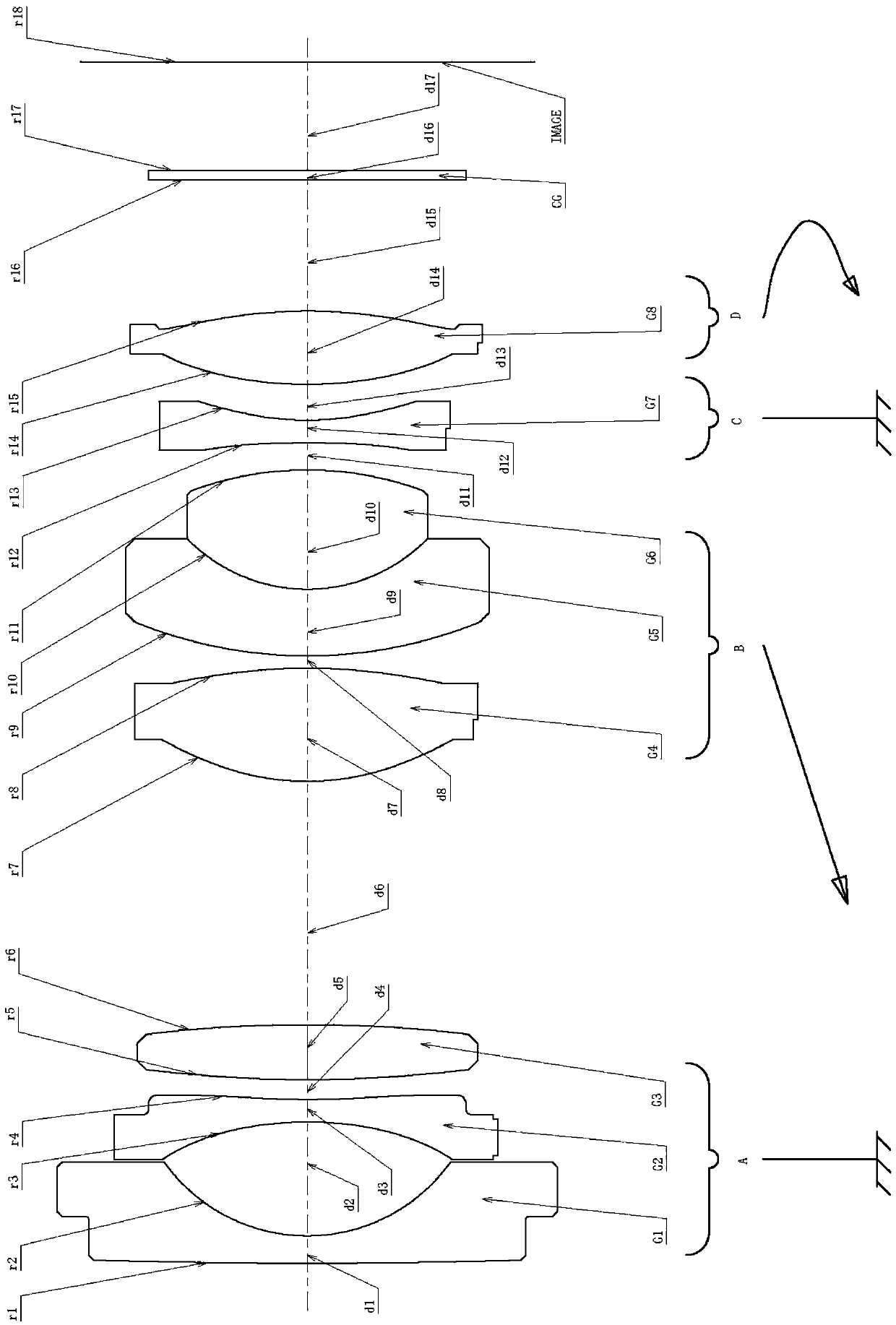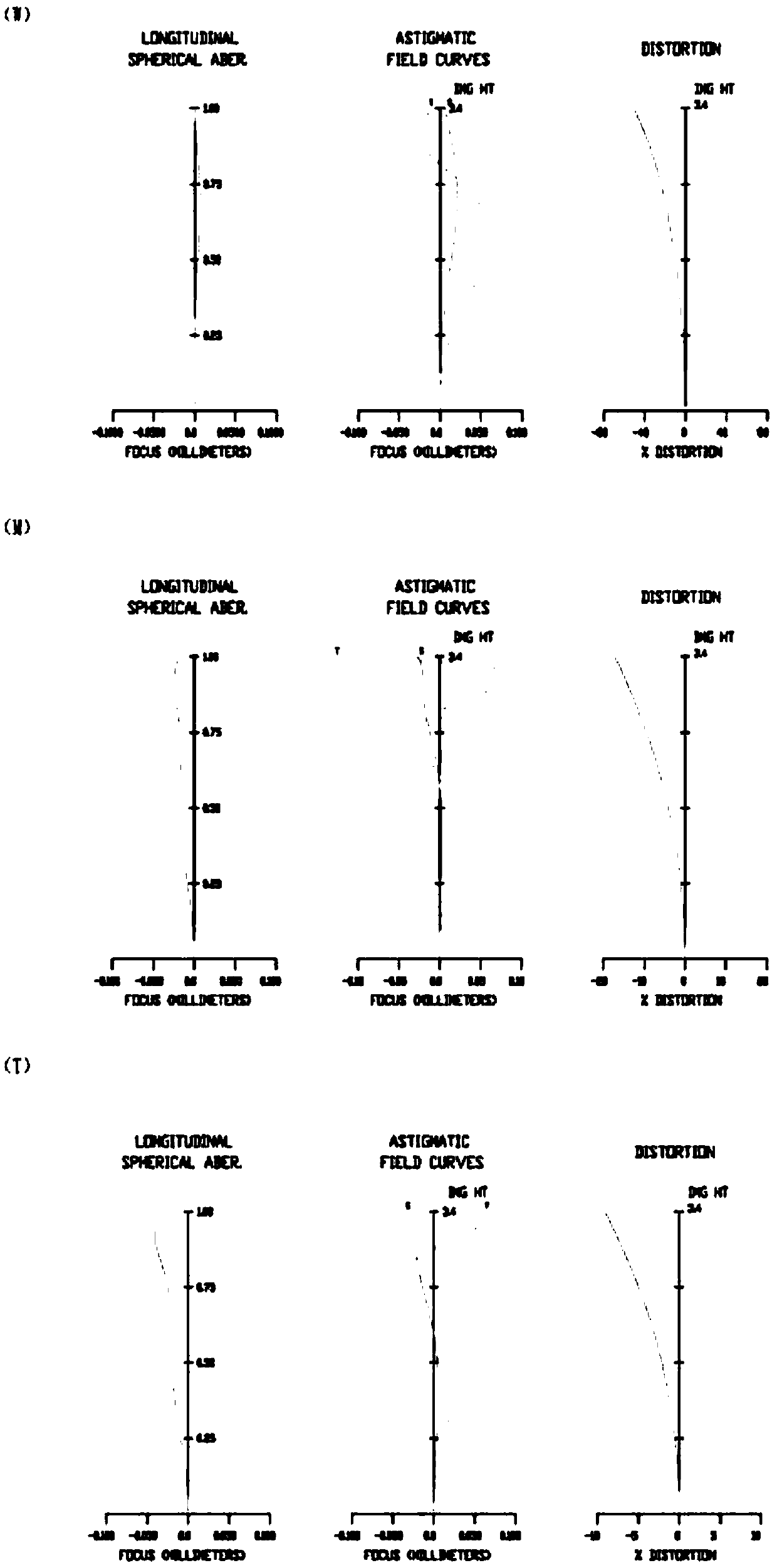a zoom lens
A zoom lens and lens technology, applied in the field of zoom lenses, can solve the problem of inability to take into account the total optical length and the total optical length, etc.
- Summary
- Abstract
- Description
- Claims
- Application Information
AI Technical Summary
Problems solved by technology
Method used
Image
Examples
Embodiment 1
[0087] Refer below figure 1 , 2 , to illustrate the first embodiment of the present invention.
[0088] figure 1 It is a cross-sectional view along the optical axis showing the configuration of the zoom lens of Example 1. The zoom lens is arranged in sequence along the light incident direction, the first lens group A with negative refractive power, the second lens group B with positive refractive power, the third lens group C with negative refractive power, and the light The focal power is positive fourth lens group D.
[0089] In addition, a cover glass CG is disposed between the fourth lens group D and the imaging plane IMAGE. The protective glass CG can be arranged as needed, and can be omitted when not needed. In addition, on the imaging surface IMAGE, a light-receiving surface of a solid-state imaging element such as a CCD or a CMOS is disposed.
[0090] The first lens group A, whose refractive power is negative, includes the first lens G1, the second lens G2 and th...
Embodiment 2
[0179] Refer below figure 1 , 3 , to illustrate the second embodiment of the present invention.
[0180] figure 1 It is a sectional view along the optical axis showing the configuration of the zoom lens of Example 2. The zoom lens is arranged in sequence along the light incident direction, the first lens group A with negative refractive power, the second lens group B with positive refractive power, the third lens group C with negative refractive power, and the light The focal power is positive fourth lens group D.
[0181] In addition, a cover glass CG is disposed between the fourth lens group D and the imaging plane IMAGE. The protective glass CG can be arranged as needed, and can be omitted when not needed. In addition, on the imaging surface IMAGE, a light-receiving surface of a solid-state imaging element such as a CCD or a CMOS is disposed.
[0182]The first lens group A, whose refractive power is negative, includes the first lens G1, the second lens G2 and the thir...
Embodiment 3
[0271] Refer below figure 1 , 4 , to illustrate the third embodiment of the present invention.
[0272] figure 1It is a sectional view along the optical axis showing the configuration of the zoom lens of Example 3. The zoom lens is arranged in sequence along the light incident direction, the first lens group A with negative refractive power, the second lens group B with positive refractive power, the third lens group C with negative refractive power, and the light The focal power is positive fourth lens group D.
[0273] In addition, a cover glass CG is disposed between the fourth lens group D and the imaging plane IMAGE. The protective glass CG can be arranged as needed, and can be omitted when not needed. In addition, on the imaging surface IMAGE, a light-receiving surface of a solid-state imaging element such as a CCD or a CMOS is disposed.
[0274] The first lens group A, whose refractive power is negative, includes the first lens G1, the second lens G2 and the third...
PUM
 Login to View More
Login to View More Abstract
Description
Claims
Application Information
 Login to View More
Login to View More - Generate Ideas
- Intellectual Property
- Life Sciences
- Materials
- Tech Scout
- Unparalleled Data Quality
- Higher Quality Content
- 60% Fewer Hallucinations
Browse by: Latest US Patents, China's latest patents, Technical Efficacy Thesaurus, Application Domain, Technology Topic, Popular Technical Reports.
© 2025 PatSnap. All rights reserved.Legal|Privacy policy|Modern Slavery Act Transparency Statement|Sitemap|About US| Contact US: help@patsnap.com



